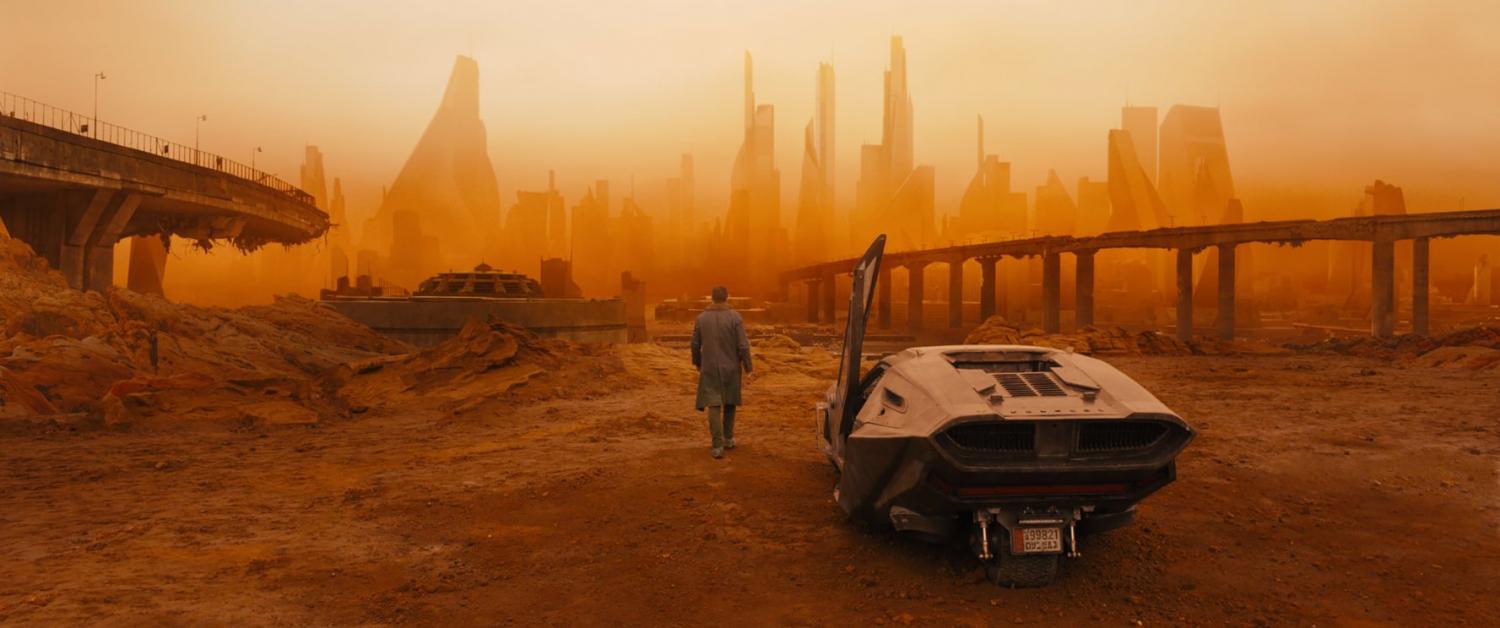“Blade Runner 2049” is thought provoking and visually stunning
October 8, 2017

K walks through an abandoned Las Vegas in an orange-toned montage. Released on Oct. 8, this film takes place 30 years after 1982 cyberpunk film “Blade Runner.”
Note: “Blade Runner 2049” is rated R by the MPAA. This is a spoiler free review.
What is real?
“Blade Runner 2049” blurs the line between authenticity and artificiality. K (Ryan Gosling) is a Blade Runner, someone tasked with “retiring” old models of Replicants, androids who were banned due to uprising against human society. Discovering a secret about an event from the past, he is sent on a search for Rick Deckard (Harrison Ford), a missing former Blade Runner.
K is a newer Replicant designed to obey his commanders, but finds clues that lead him to believe that he may not just be a Replicant. His lover Joi (Ana de Armas) is a mass produced robot made to be a companion. Throughout the film, we are left wondering how “real” their lives are.
Admittedly I had only seen the original film “Blade Runner” once, and the slow pacing and surprisingly little action threw me off when I saw it. However, the world that director Ridley Scott created was impressive- a Los Angeles glowing under a sea of neon with elements that blended hints of the 1980s with the future.
“Blade Runner 2049,” directed by Denis Villeneuve, is the perfect extension to that world. The original movie’s version of the future was essentially the 1980s with more technology, and clearly didn’t accurately “predict” the future. Rather than alter that world, the city’s buildings in the new film still read “Atari” and “Sony,” a detail I enjoyed seeing.
Villeneuve and cinematographer Roger Deakins, who had last worked together on “Sicario,” make a powerful pairing. The beginning of the movie reminded me of Villeneuve’s “Arrival,” minimalistic and dramatic. Added with seamlessly incorporated visual effects, the film manages to look natural. If anyone from “Blade Runner 2049” wins any Oscars, it needs to be Deakins. He has been nominated 13 times and won none. For comparison, Leonardo DiCaprio was nominated for five before his first Oscar win.
Something that didn’t sit so well with me was the film’s continued misogyny. The original “Blade Runner” had a “romantic” scene that may not have created backlash in the 1980s, but without a doubt was a portrayal of sexual assault. Luckily, nothing like that happened in this film, but most of the women are literally objects and there is plenty of violence against them. Sure, this was written intentionally to send a message about how women are treated. I get it and women get it- and have been getting it for a long time. But did most of the movie’s following of men get it? Probably not. I saw that when someone commented online that he wished he owned a Joi. Hollywood can do better than create content that ultimately continues to perpetuate these backwards tropes.
As tied to the original film as it seems, “Blade Runner 2049” could stand on its own. The only caution I have is that at 2 hours and 44 minutes, it most definitely helps to have knowledge of “Blade Runner’s” events to understand why certain plot points are important and to stay engaged the whole time. For those who do enjoy sensory details- visually and sonically- over a faster pacing and more violence though, the runtime won’t seem long enough.





